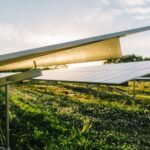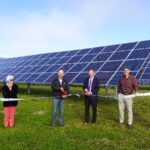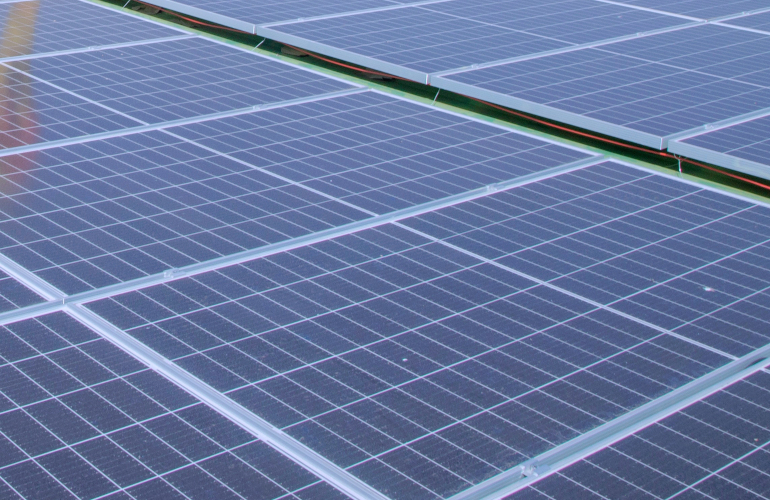Vermont solar companies expand pollinator habitat footprint on PV arrays
Vermont solar marked a milestone this summer on collaborative efforts to restore pollinator habitat in the state. Bee the Change and Green Lantern Solar, members of Renewable Energy Vermont (REV), teamed up to install a pollinator-friendly solar field on a 4.5-acre site in New Haven. The site will soon host dozens of species of plants designed to attract native and migratory pollinator insects and beneficial bird species.

Mike Kiernan, Bee the Change
Prior to REV’s pollinator solar pledge in 2017, most Vermont solar fields were covered with hay or turf grass. Following guidance from biologists at the University of Vermont’s Agricultural Extension, the Gund Institute for the Environment and Vermont’s Agency of Natural Resources, pollinator-friendly projects now use land under solar arrays and power lines to create habitat for native pollinators.
Pollinators are a crucial part of any ecosystem, and their decline has spurred action across many sectors, including Vermont’s robust renewable energy sector.
“We are teaming up with the most forward-thinking renewable leaders who want to see the space be doubly useful, to address both climate change and the crisis of species loss,” said
Mike Kiernan, founder of Bee the Change. “We began a few years ago in a field just south of Middlebury. With the spaces coming on line in the next year, we will have built habitat equivalent to every Vermont household making a 6 ft by 6 ft pollinator garden. And they should, too.”
Habitat loss is one of the principal reasons pollinator populations are near collapse worldwide. As parking lots, residential lawns, sprawl development and roads take over meadows and woodlands where native species once thrived, pollinator species struggle to find the resources they need.
A 2018 study by researchers at the University of Vermont and the Vermont Center for Ecostudies found that nearly half of Vermont’s known bumble bee species have either vanished or are in serious decline. The Agency of Natural Resources encourages Vermonters to take action by choosing to plant a variety of native plants and wildflowers wherever possible.

Mike Kiernan, Bee the Change.
Several Vermont businesses and organizations have committed to pollinator-friendly practices, including REV Members Acorn Energy Co-op, Aegis Renewable Energy, All Earth Renewables, Catamount Solar, EDF Renewables (formerly GroSolar), Encore Renewables, Green Lantern Group, Grassroots Solar, Green Mountain Power and VSECU.
“We have seen increasing populations of insects, birds, bees and butterflies over the past three years at our first solar project with Bee the Change,” said Sam Carlson of Green Lantern Solar. “We wanted to build on the success of our first project with Bee the Change and demonstrate that solar projects in Vermont can and do improve pollinator-friendly habitat, which is so vital to Vermont’s agricultural productivity and landscapes. In this way we produce both clean, Vermont-made solar electricity and increase critically important pollinator populations — a great use of the land.”
Pollinator-friendly planting is part of a win-win-win strategy for Vermont solar projects and landowners, supporting clean energy, agriculture, and pollinators. By using the land under and around solar arrays for native pollinator-friendly plants, Vermont solar energy can play a significant role in re-establishing critical pollinator habitats and mitigating the threat to bees and birds, which are essential crop pollinators.
Guidance is available from the UVM Extension office for landowners hosting solar projects. Businesses planning new solar projects are encouraged to take the pollinator pledge and complete a Pollinator Scorecard to provide transparent guidance for vegetative management plans using pollinator-friendly plants.
News item from Renewable Energy Vermont
<!–
–>
Original Source: https://www.solarpowerworldonline.com/2020/09/vermont-solar-companies-expand-pollinator-habitat-footprint-on-pv-arrays/










